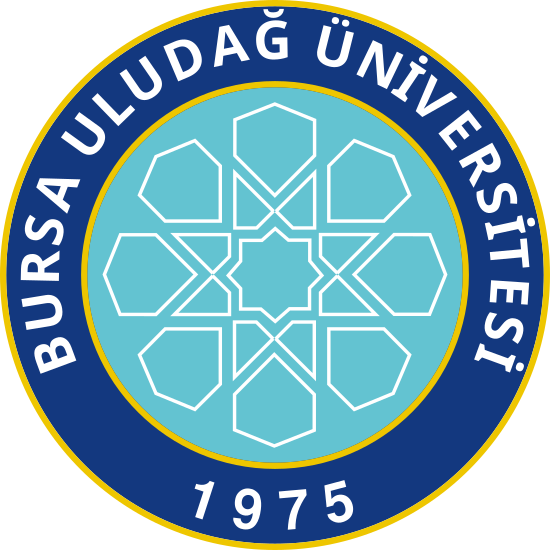Bu öğeden alıntı yapmak, öğeye bağlanmak için bu tanımlayıcıyı kullanınız:
http://hdl.handle.net/11452/21429| Başlık: | A molecular assessment of phylogenetic relationships and lineage accumulation rates within the family Salamandridae (Amphibia, Caudata) |
| Yazarlar: | Weisrock, David W. Zhao, Ermi Papenfuss, Theodore J. Polymeni, Rosa Maria Macey, J. Robert Litvinchuk, Litvinchuk Jowkar, Houman Larson, Allan Uludağ Üniversitesi/Fen Edebiyet Fakültesi/Biyoloji Bölümü. Uğurtaş, İsmail Hakkı 6603658894 |
| Anahtar kelimeler: | Genetics & heredity Evolutionary biology Biochemistry & molecular biology Salamandridae Salamander Newt Lineage accumulation Mitochondrial DNA Triturus Radiation Biogeography Mitochondrial Newts Anderson amphibia Biochemical systematics Evolutionary relationships Genus paramesotriton caudata Diversification rates |
| Yayın Tarihi: | 2006 |
| Yayıncı: | Academic Press Inc Elsevier Science |
| Atıf: | Weisrock, D. W. vd. (2006). ''A molecular assessment of phylogenetic relationships and lineage accumulation rates within the family Salamandridae (Amphibia, Caudata)''. Molecular Phylogenetics and Evolution, 41(2), 368-383. |
| Özet: | We examine phylogenetic relationships among salamanders of the family Salamandridae using approximately 2700 bases of new mtDNA sequence data (the tRNA(Leu), ND1, tRNA(Gln), tRNA(Gln), tRNA(Met), ND2, tRNA(Trp), tRNA(Ala), tRNA(Asn), tRNA(Cys), tRNA(Tyr), and Cot genes and the origin for light-strand replication) collected from 96 individuals representing 61 of the 66 recognized salamandrid species and outgroups. Phylogenetic analyses using maximum parsimony and Bayesian analysis are performed on the new data alone and combined with previously reported sequences from other parts of the mitochondrial genome. The basal phylogenetic split is a polytomy of lineages ancestral to (1) the Italian newt Salamandrina terdigitata, (2) a strongly supported clade comprising the "true" salamanders (genera Chioglossa, Mertensiella, Lyciasalamandra, and Salamandra), and (3) a strongly supported clade comprising all newts except S. terdigitata. Strongly supported clades within the true salamanders include monophyly of each genus and grouping Chioglossa and Mertensiella as the sister taxon to a clade comprising Lyciasalamandra and Salamandra. Among newts, genera Echinotriton, Pleurodeles, and Tylototriton form a strongly supported clade whose sister taxon comprises the genera Calotriton, Cynops, Euproctus, Neurergus, Notophthalmus, Pachytriton, Paramesotriton, Taricha, and Triturus. Our results strongly support monophyly of all polytypic newt genera except Paramesotriton and Triturus, which appear paraphyletic, and Calotriton, for which only one of the two species is sampled. Other well-supported clades within newts include (1) Asian genera Cynops, Pachytriton, and Paramesotriton, (2) North American genera Notophthalmus and Taricha, (3) the Triturus vulgaris species group, and (4) the Triturus cristatus species group; some additional groupings appear strong in Bayesian but not parsimony analyses. Rates of lineage accumulation through time are evaluated using this nearly comprehensive sampling of salamandrid species-level lineages. Rate of lineage accumulation appears constant throughout salamandrid evolutionary history with no obvious fluctuations associated with origins of morphological or ecological novelties. |
| URI: | https://doi.org/10.1016/j.ympev.2006.05.008 https://www.sciencedirect.com/science/article/pii/S1055790306001825 http://hdl.handle.net/11452/21429 |
| ISSN: | 1055-7903 1095-9513 |
| Koleksiyonlarda Görünür: | Scopus Web of Science |
Bu öğenin dosyaları:
Bu öğeyle ilişkili dosya bulunmamaktadır.
DSpace'deki bütün öğeler, aksi belirtilmedikçe, tüm hakları saklı tutulmak şartıyla telif hakkı ile korunmaktadır.
